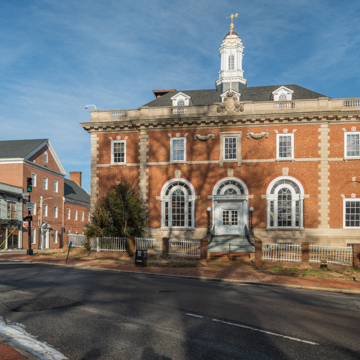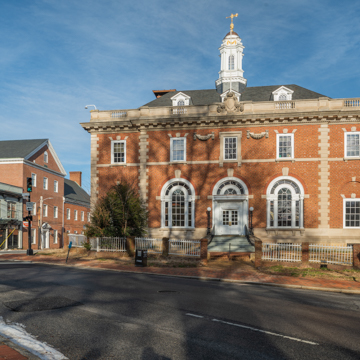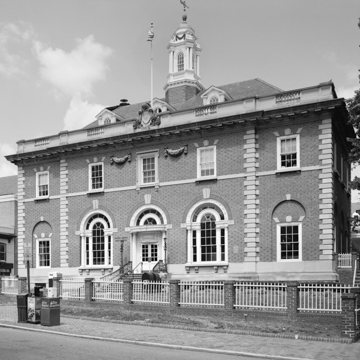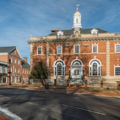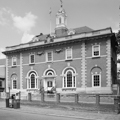When the construction contract for a new post office was announced in November 1900, one Annapolis newspaper remarked with relief that the city was to “at last have a post office building more in keeping with its dignity as the capital of an important and flourishing state.” Designed under the supervision of Taylor, who led the Treasury Department’s design office from 1897 to 1912, the post office is an elegantly detailed early-twentieth-century Colonial Revival design complementing its setting on historic Church Circle. The original 1901 section of the building draws inspiration from the work of English architect Christopher Wren, with a central pavilion and corners accented by stone quoins, Venetian windows with stone sills and surrounds, and other richly detailed features such as stone festoons and a central cupola supporting a gilded pineapple weathervane. The interior of the original section retains its handsome carved oak paneling, marble wainscot, and terrazzo floor. A rear addition in 1939 expanded the service ell and loading docks for automobile access. In 2019–2020 the former post office was restored and adapted for commercial use.
You are here
U.S. POST OFFICE
1901, James Knox Taylor, Supervising Architect of the U.S. Treasury; 1939 addition, Louis A. Simon, Supervising Architect of the U.S. Treasury; 2016–2019 restored, Ziger/Snead. 1 Church Cir.
If SAH Archipedia has been useful to you, please consider supporting it.
SAH Archipedia tells the story of the United States through its buildings, landscapes, and cities. This freely available resource empowers the public with authoritative knowledge that deepens their understanding and appreciation of the built environment. But the Society of Architectural Historians, which created SAH Archipedia with University of Virginia Press, needs your support to maintain the high-caliber research, writing, photography, cartography, editing, design, and programming that make SAH Archipedia a trusted online resource available to all who value the history of place, heritage tourism, and learning.















